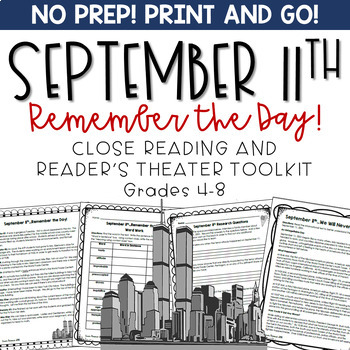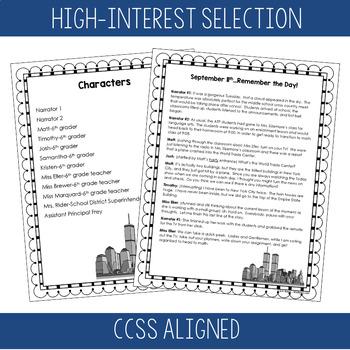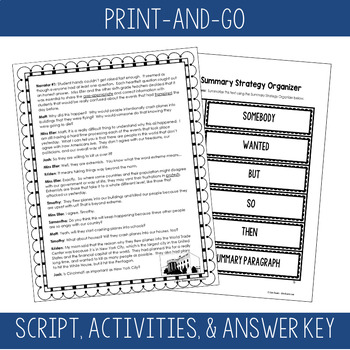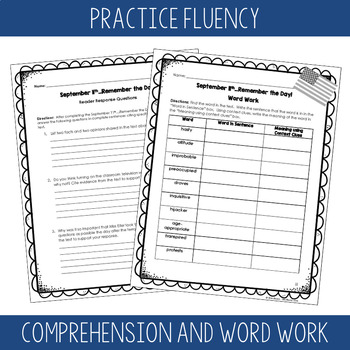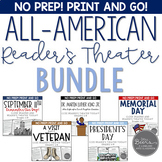September 11th Reader's Theater and Close Reading Toolkit Grades 4-8
- PDF
What educators are saying
Also included in
- This All-American Reader's Theater Scripts Bundle features 5 different American history reader's theater toolkits to help your students learn more about our National Holidays while practicing fluency, reading comprehension, and growing vocabulary through context clue word work.Each unit is a NO PREPPrice $12.00Original Price $18.75Save $6.75
- This incredible mega bundle includes a full year's worth of middle grade ELA resources at a significant discount. You get all of the tools you need to offer differentiation through a variety of reading, writing, speaking, listening and word work activities.WRITINGELA made Easy includes several resouPrice $139.00Original Price $268.50Save $129.50
- The complete collection of Erin Beers' reader's theater scripts for BIG KIDS!Cover your reading literature standards while engaging your students with these high-interest reader's theater scripts.Your students will LOVE the chance to perform while working on fluency, comprehension, context clues, anPrice $49.00Original Price $90.00Save $41.00
Description
September 11, 2001 was a significant day in American history. I created this reader's theater toolkit in order to give my students my history of the event as well as allow them to deepen their understanding through research.
This toolkit includes:
• clear directions for easy implementation
• CCSS covered both ELA and History R.H.6-8.4
• 7-page, 12-character reader's theater script
• reader response questions
• context clue word work
• an informational text with reader response questions for Close Reading and compare and contrast work
• a Venn diagram to compare and contrast between the two texts
• Interview questions
• research sites for student research
• research bubbles, an interactive tool for recording research
Estimated Lexile Measure: 800
I have included a prologue so that your students will have an understanding of how this reader's theater came to be. They will be more excited than ever to find out a bit more about our US history!
********************************
Save BIG with these Reader's Theater BUNDLES...
- Reader's Theater Scripts for BIG KIDS Collection (24 Scripts)
- Reader's Theater Scripts Mega Bundle (12 Scripts)
- Text-Based Reader's Theater and Read Aloud Activities Bundle (5 Scripts)
- American History Reader's Theater Scripts Bundle (5 Scripts)
********************************
More ELA Resources from Mrs. Beers Language Arts Classroom:
- ELA Activities by Month Bundle
- Editable ELA Word Wall for Middle School
- ELA Emergency Sub Plans Bundle
- Wonder Novel Study Unit
- Context Clue Task Cards for Middle School
- Poetry Analysis Resource for Grades 4-8
********************************
I would LOVE to hear your feedback on this product. By leaving feedback, you have the opportunity to earn points toward future purchases. Also, be sure to FOLLOW me so that you are aware of any new products as soon as they are posted.
Happy Reading!
Erin

